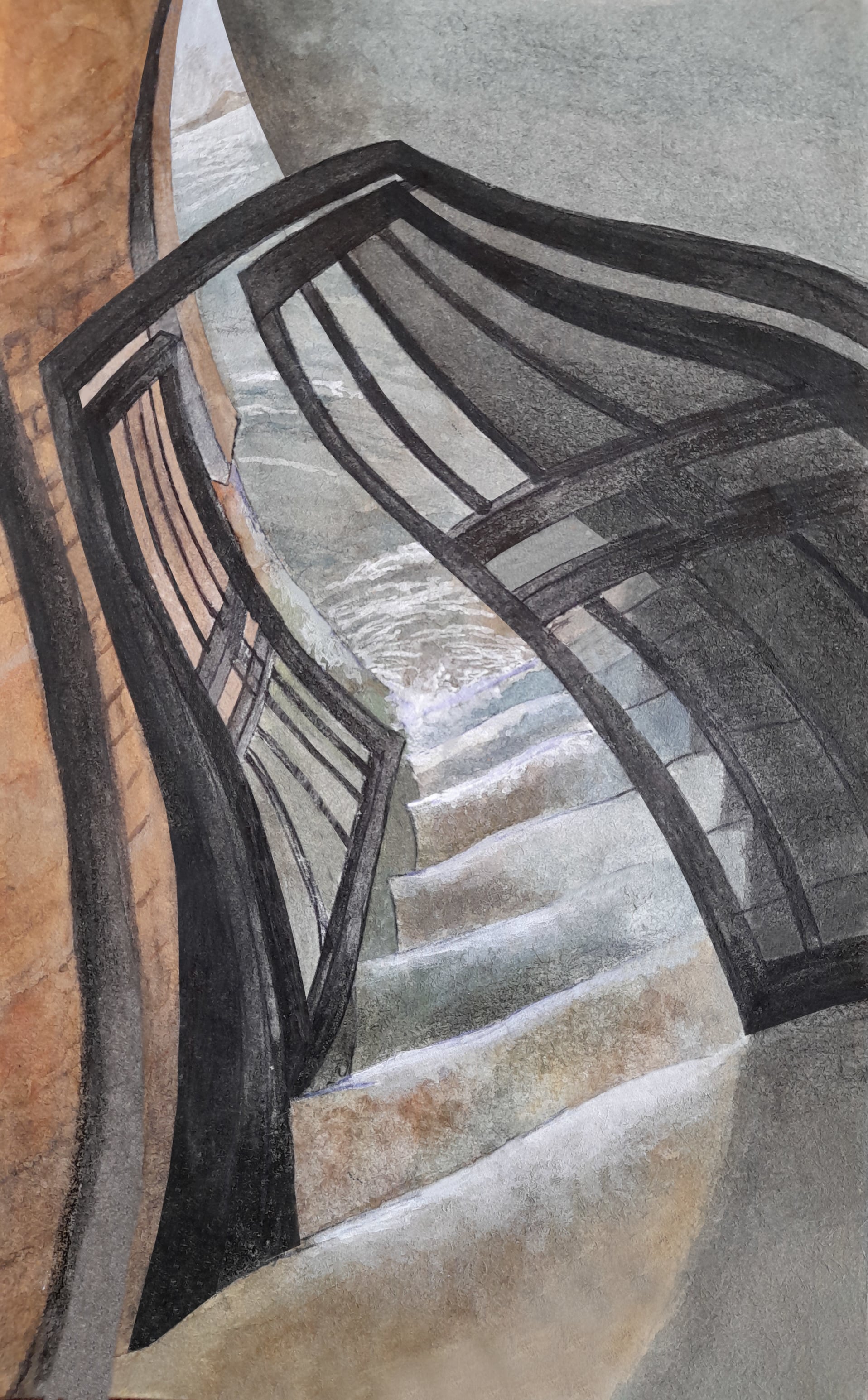
Execution Dock close to Pelican stairs (Day 4)
Wapping is famous for its shipping trade, boasting more wharves that you can shake a stick at, and just as many pubs! It is also renowned for its ties with historical piracy.
At high tide, I waddle along the narrow streets under the weight of my bag. Wherever possible, I wander through the alleys that lead to the river stairs. These curiously slimy stairs were the pick-up and drop-off points for the watermen - the historical water taxis of the Thames. I chuckle to myself as I imagine what the floating congestion might have looked like here 200 years ago, with rowdy, yelling, sweaty rowers adding to the murky stink and sloshing noises of the river.
Down one of the narrow passages, just beyond 'The Prospect of Whitby' pub, I spy a solitary gallows, hanging over the river from the pub garden. A quick Google search informs me that this gallows stands to mark Execution Dock. For 400 years, this was where many people convicted of piracy were hanged.
Mutiny, robbery, smuggling, kidnapping and ransom were just some of the acts of piracy people were executed for. Piracy is still prevalent today and remains a crime under international law. Today, multiple organisations monitor global piracy hotspots, while others provide guidance, insurance, risk assessments and training to the crews and trade vessels that navigate these areas.
When in these areas, deterrents are used by crews to dissuade possible attacks. These include:
Razor wire on the outer railing and key passageways, strategically placed dummies to make the crew appear bigger than it is, foam spray to make boarding a vessel more precarious and shatterproof windows to minimise the impact of firearms attacks. I wander back along the passage, sober and thoughtful.
watercolour and pen on paper